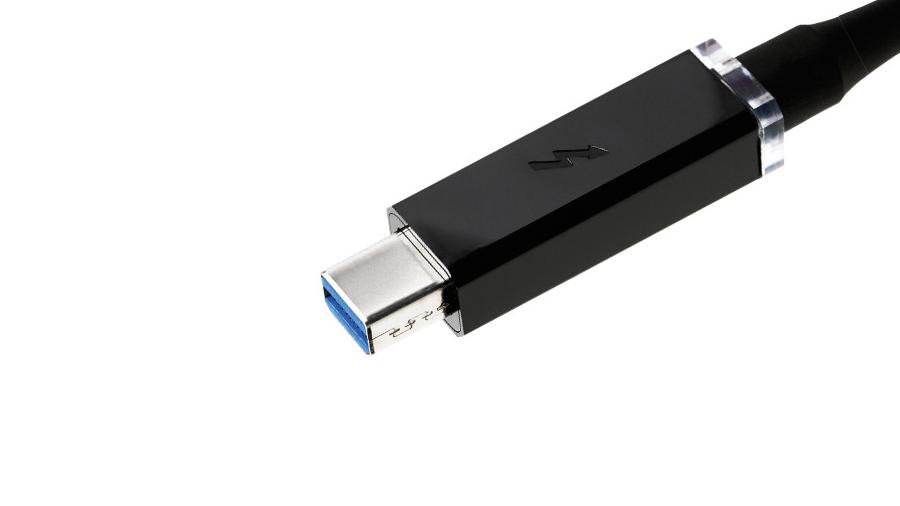New Thunderbolt to roll in for Computex
Bringing USB-C serious competition

Intel may be set to unveil specifications for the next generation of Thunderbolt at Computex 2015. The chip-maker has sent out teasers to its media event about an announcement about the technology.
The Thunderbolt standard has been popular with Apple, appearing in the company's desktops and laptops in the past, but faces an uncertain future with the recent introduction of USB-C, or USB Type-C.
Thunderbolt allows computing users to connect peripherals and accessories – monitors and hard drives – to their computers. Users can also daisy chain their connections together with speeds up to 20 Mbps, double what is capable using USB 3.1.
8K video
Intel has not disclosed what news will be coming out of Computex, but in the past, the company has stated that it is ambitiously working on getting faster data transfer speeds. Intel says that Thunderbolt speeds can reach up to 50Gbps using silicon photonics technology.
This could potentially open the doors to 8K video. Even though there aren't any 8K displays on the market yet, the high resolution video will be natively supported by Microsoft on the Windows 10 operating system. Thunderbolt could fill this need due to its fast transfer speeds.
USB-C
According to a Computerworld report, Intel will also talk about USB-C 3.1 specifications at its Computex event. Even though USB-C can be seen as a rival to Thunderbolt, Intel has maintained that the two technologies complement each other.
Despite slower transfer speeds, USB-C supports more types of peripherals – including smartphones and tablets like the Nokia N1 – and can also be used to recharge devices. Many had questioned Thunderbolt's future as Apple, a long-time proponent of the technology, ditched the standard along with legacy USB ports on its uni-port MacBook, a device that brought USB-C mainstream. The standard is also adopted on the new Chromebook Pixel, but Google took a more moderate approach by placing USB-C alongside existing ports.
Sign up to the TechRadar Pro newsletter to get all the top news, opinion, features and guidance your business needs to succeed!
The USB standards body has stated in the past that Thunderbolt could also live on inside USB 3.1. This means that if USB-C is designed with copper and optical wires, the USB standard could achieve similar fast transfer speeds to Thunderbolt.
- Read our review of the 12-inch MacBook